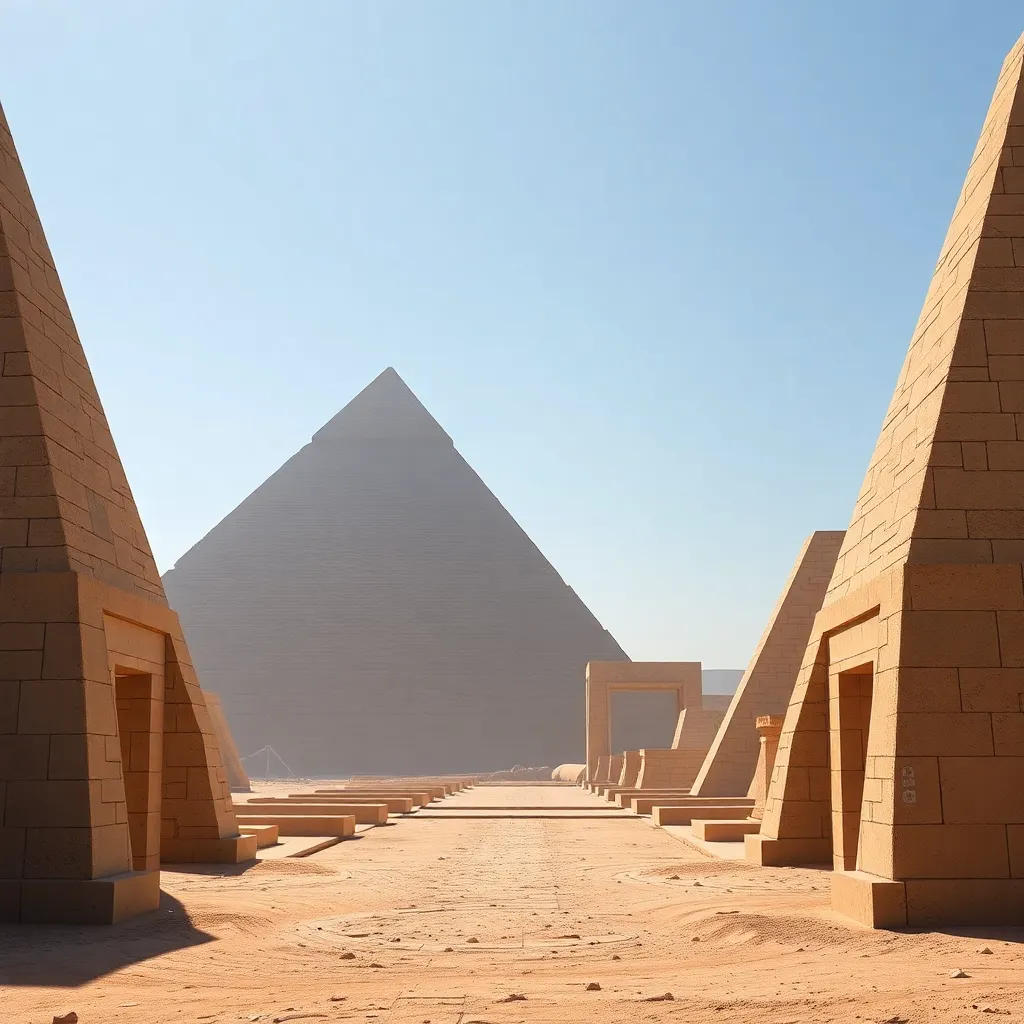The Influence of Egyptian Pyramids on Modern Architecture
I. Introduction
The Egyptian pyramids stand as monumental achievements in architecture, representing not only the ingenuity of ancient builders but also their deep cultural significance. These structures, primarily built as tombs for pharaohs, reflect the civilization’s beliefs in the afterlife and the power of the divine. Over time, the pyramids have inspired countless architects and designers, influencing modern architectural practices worldwide. This article aims to explore the enduring legacy of the pyramids on contemporary architecture.
II. Historical Context of Egyptian Pyramids
The construction of the Egyptian pyramids involved sophisticated techniques and materials that were revolutionary for their time. The following points outline the historical context surrounding their creation:
- Construction techniques and materials: The pyramids were primarily built using limestone, granite, and mudbrick. The workers employed advanced techniques such as the use of ramps to transport stones and precise measurements to ensure alignment.
- Architectural features and design principles: The pyramids exhibit a unique design characterized by their geometric shapes. Each pyramid had a square base, with four triangular sides converging to a point at the top, symbolizing the rays of the sun.
- Symbolism and cultural importance: Pyramids were not only tombs but also representations of the ancient Egyptians’ beliefs in the afterlife. They were seen as a means to facilitate the pharaoh’s journey to the heavens.
III. Key Architectural Elements of Pyramids
Several architectural elements of the Egyptian pyramids have significantly influenced modern design principles:
- Geometric shapes and forms: The pyramids’ geometric precision has inspired modern architects to adopt similar forms in their designs, emphasizing symmetry and balance.
- Use of alignment and orientation: The pyramids are famously aligned with astronomical bodies, illustrating an understanding of celestial movements. This practice of orientation is echoed in many modern buildings that integrate natural light and environmental factors.
- Structural stability and engineering innovations: The pyramids’ ability to withstand the test of time speaks to their structural integrity. Modern architects study these ancient methods to innovate and enhance the durability of contemporary structures.
IV. Modern Architectural Movements Inspired by Pyramids
The influence of pyramids can be seen across various modern architectural movements:
- The rise of Brutalism and geometric design: Brutalist architecture often employs raw materials and geometric shapes. The pyramids’ stark forms resonate with this aesthetic, emphasizing function and materiality.
- The impact of Minimalism on modern structures: Minimalist architecture focuses on simplicity and clean lines, which can be traced back to the pure geometric forms of the pyramids.
- Incorporation of ancient techniques in contemporary architecture: Many architects draw from the construction methods of the pyramids, such as using local materials and sustainable practices, to create environmentally friendly buildings.
V. Case Studies of Modern Structures Influenced by Pyramids
Several modern structures reflect the iconic design of the Egyptian pyramids:
- The Louvre Pyramid: Designed by I.M. Pei, this glass pyramid serves as the entrance to the Louvre Museum in Paris and embodies the essence of pyramid architecture while utilizing contemporary materials.
- The Pyramids of Giza Pavilion: Located in Egypt, this pavilion showcases the integration of traditional pyramid forms with modern architectural techniques, creating a dialogue between past and present.
- Insights from architects: Many architects, such as Zaha Hadid and Daniel Libeskind, have cited the pyramids as a source of inspiration, incorporating their geometric forms into innovative designs.
VI. Cultural and Symbolic Resonance in Architecture
The pyramids continue to hold cultural and symbolic significance in modern architecture:
- The continuing significance of pyramids as symbols of power and permanence: The monumental nature of pyramids conveys strength and durability, qualities that modern structures often aim to emulate.
- How modern architecture evokes the legacy of ancient structures: Many architects consciously reference the pyramidal form to evoke a sense of history and continuity.
- Public perceptions and interpretations of pyramid-influenced designs: Pyramid-like structures are often associated with grandeur and timelessness, resonating positively with the public.
VII. Challenges and Critiques of Pyramidal Influence
While the influence of pyramids on modern architecture is profound, it is not without its challenges:
- Issues of originality and cultural appropriation in architecture: The use of pyramid forms raises questions regarding originality and the appropriation of ancient cultures.
- Sustainability concerns related to pyramid-inspired designs: Some critics argue that modern interpretations of pyramids may not always consider environmental impacts.
- Balancing historical homage with modern needs: Architects strive to respect ancient traditions while meeting contemporary requirements, a balance that can be difficult to achieve.
VIII. Conclusion
The influence of Egyptian pyramids on modern architecture is a testament to their enduring legacy. As architects look to the past for inspiration, the geometric forms, construction techniques, and cultural significances of the pyramids continue to shape contemporary design. The future of architectural design may see even more innovative integrations of ancient principles, ensuring that the relationship between history and contemporary art forms remains vibrant and relevant.




